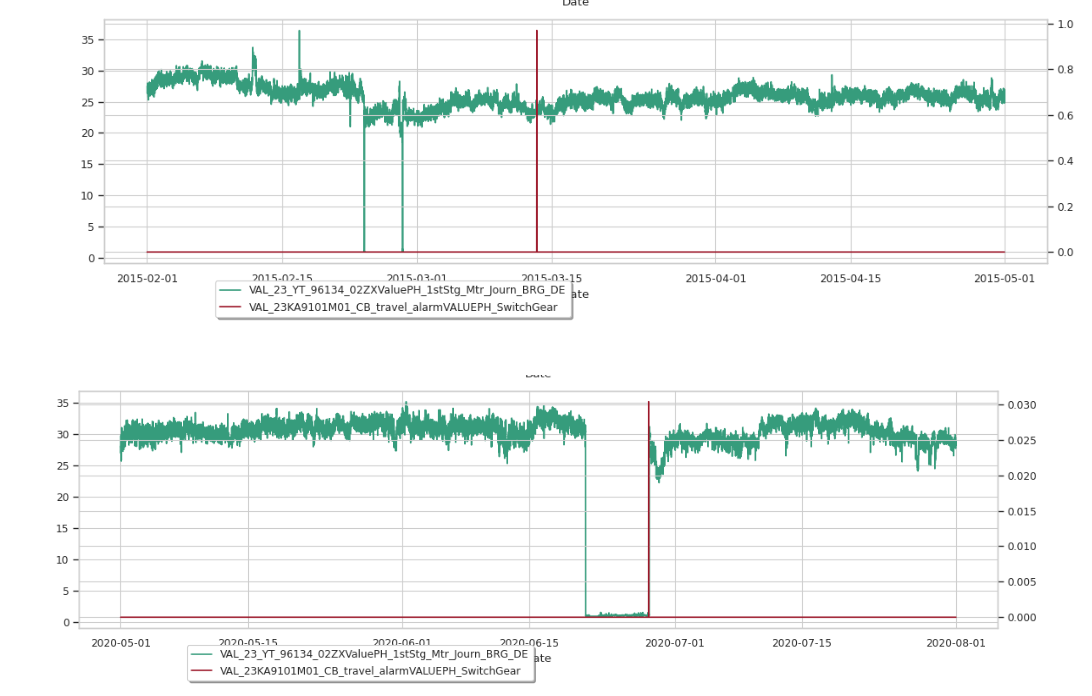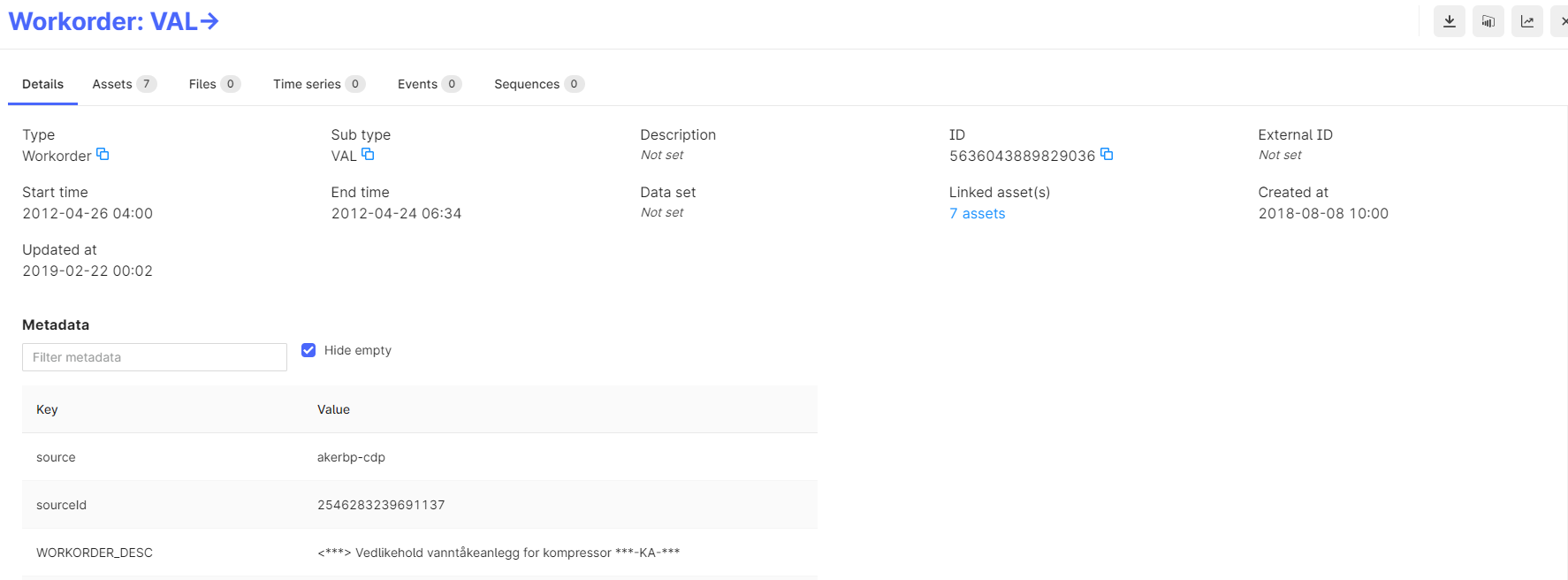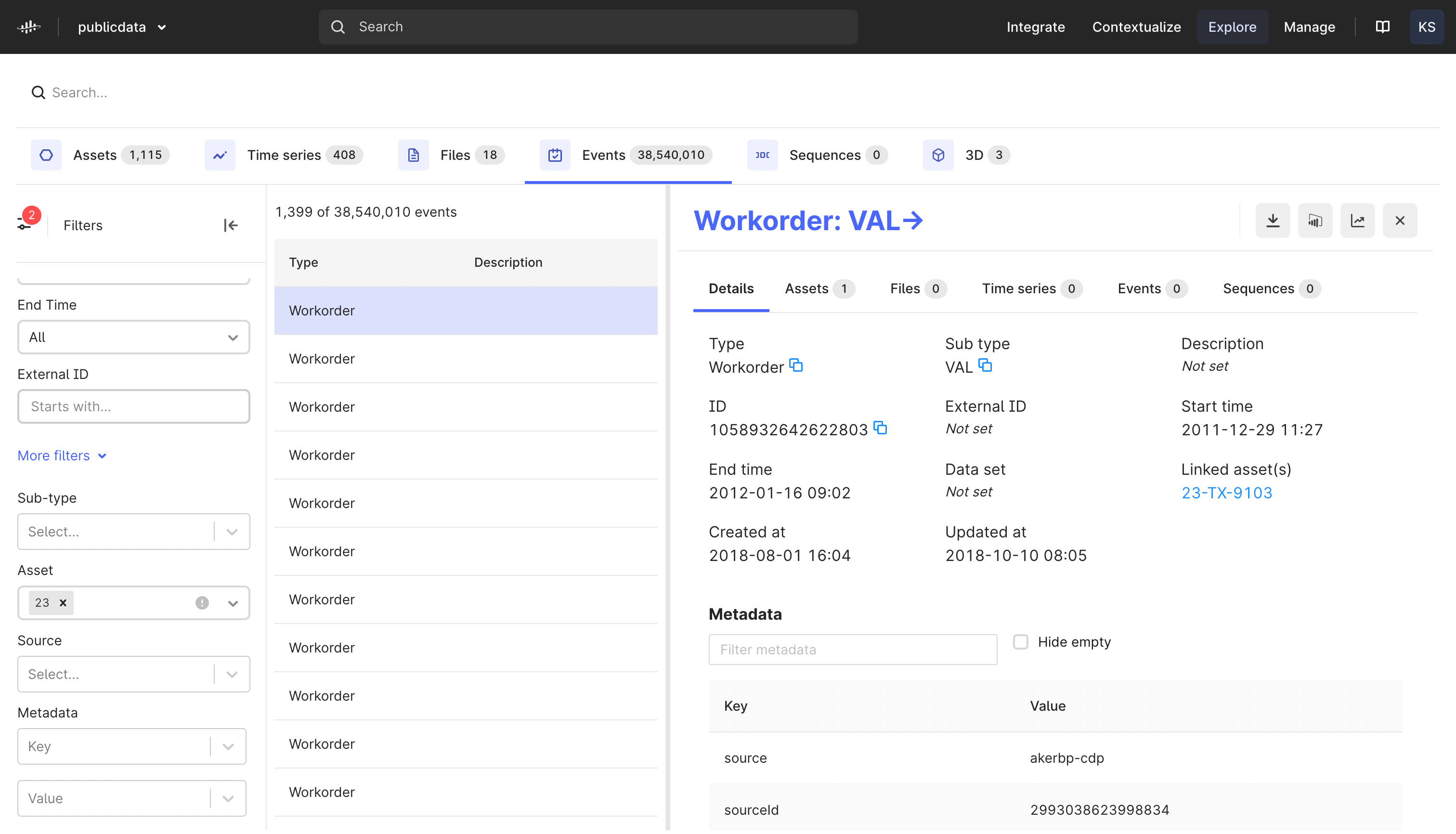There are some signals that in the names or the description have the words: alarm, warning, or fault.
E.G. There is this alarm signal, (in red ) that I’m comparing with one of the vibration signals. And the alarm seems to be on when the vibrations are close to 0 and the Compressor is off. I’m plotting the label as a combination of the name and the description, but the externalId of the alarm is: pi:160268

In most cases that alarm is on when the compressor is off, except in this case, Where I do not see any problem with the vibration signal:

There are these other two alarms, from the plots: one is on when the compressor is off and the other one when it is starting up. But I do not see any strange behavior in the signal when they occur.

Besides the alarms, I’ve also looked into some of the fault signals but those seem to be on for very long times:

Is there another way to use the alarm and fault signals to label anomalies or failures? I don’t know if using the vibration signals is the best reference to look for anomalies I just use them because usually are a good indicator of the health of the motor.
Alternatively, I would just label the anomalies by eye, and I would like to have a reference to label them properly. E.G. from this image:
I would label the values in the red box as anomalies, is that corrected or it can be a normal behavior?

And from this second image, I’m less confident that the values in the red boxes are anomalies and that may be just noise. Which would be the label for these spikes?

Best answer by kelvin
View original

 Check the
documentation
Check the
documentation Ask the
Community
Ask the
Community Take a look
at
Academy
Take a look
at
Academy Cognite
Status
Page
Cognite
Status
Page Contact
Cognite Support
Contact
Cognite Support






